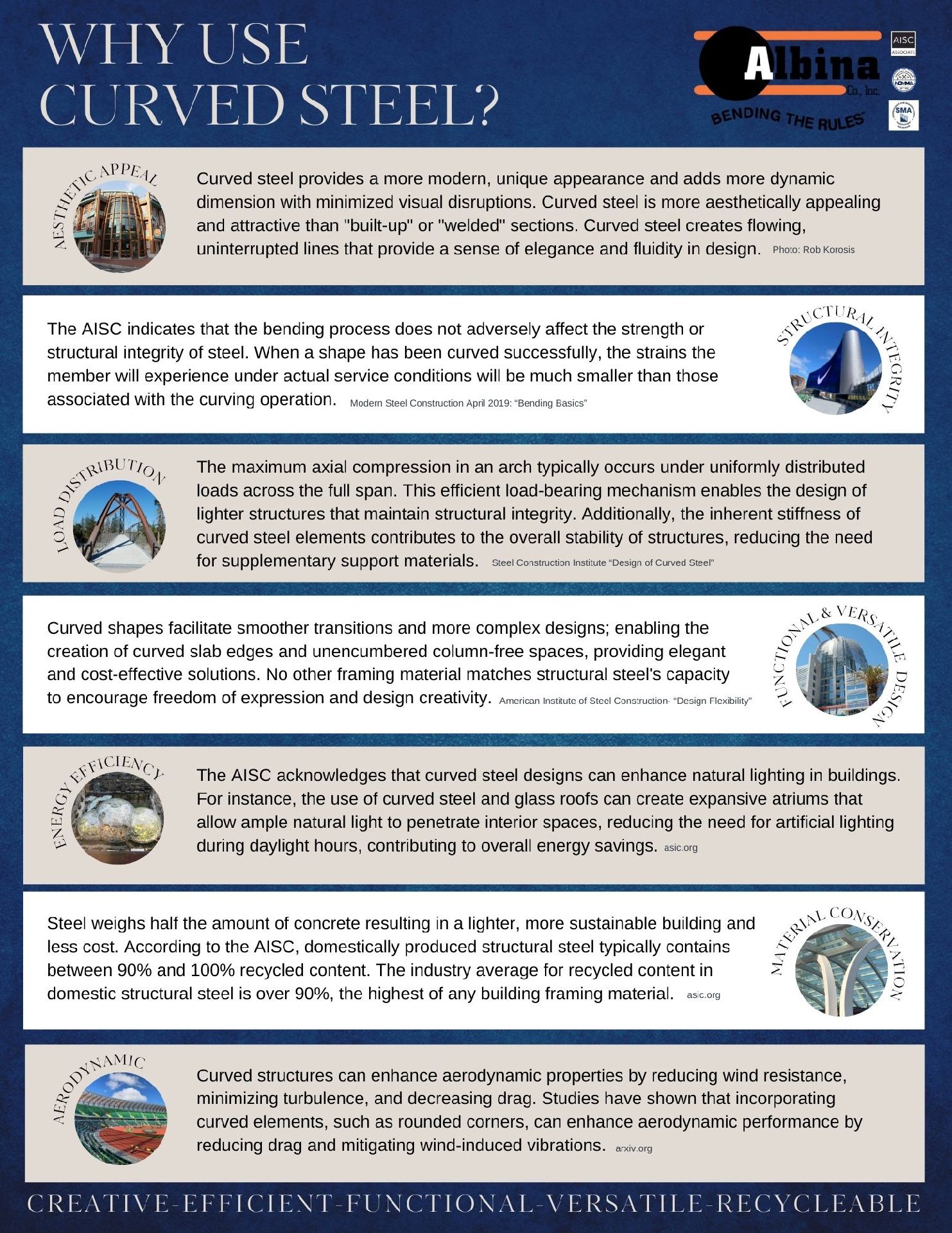Facts About Curved Steel
______________________________________________________________________________
10 Things Everyone Should Know About Curved Steel
- Curved steel members don't just "come that way" from the mill. Curved steel members are produced from straight lengths of material and are bent per your specifications by a bending company.
- The bending process does not affect the strength or structural integrity of the steel. When a shape has been curved successfully, with no buckling or localized cracking in the steel, the strains the member will experience under actual service conditions will be much smaller than those associated with the curving operation. Once the curving is done, the member can be expected to perform as needed.
- Steel can be curved with minimal distortion and is very attractive for AESS (Architecturally Exposed Structural Steel) applications. The most qualified bending companies have an internal quality control system as well as internal tolerances that they adhere to when curving a steel member.
- The radius of a bend is the most critical piece of information required to curve a steel member. The radius requirement dictates the bending process used. Roll Bending is used for larger radii bends while Rotary Draw and Hot Bending are used for tighter radii bends.
- The terms "Easy Way" and "Hard Way" have nothing to do with how easy or how hard it is to bend or curve a steel member. "Easy way" is bending a member around the weak axis, while "hard way" is bending a member around the strong axis.
- It is possible to spiral bend true HSS material. It is not necessary to split HSS prior to bending and weld the sections back together to meet your needs. It is not necessary to fill the HSS material with other structural members for internal support. We do not "build-up" stringers out of plate.
- Curved steel sections that create a smooth, consistent arc are more aesthetically appealing and less labor intensive than fabricated sections that need to be welded or spliced together.
- You can contact a bender to secure material from a local steel service center or you can contact a steel service center near you who will then arrange for the material to be drop-shipped from a steel service center located near the bender of your choice.
- Straight material and curved material with the same theoretical outside dimensions can be welded together after the bending process. Qualified bending companies can control the amount of deformation or distortion of the bent steel member to ensure proper fit/alignment to the straight member.
- Steel does not always have to be heated up in order to be bent or curved. In many instances, steel can be curved using a hot or a cold bending process.
______________________________________________________________________________
AESS Requirements
 |

